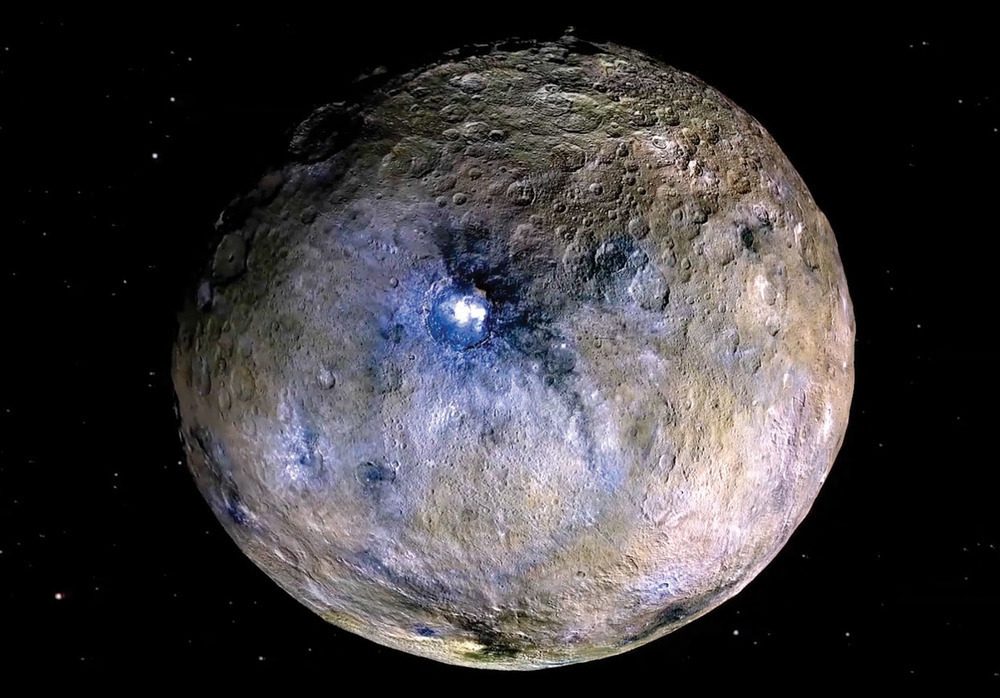Ceres Surprises

The dwarf planet Ceres is the largest body in the solar system’s asteroid belt, between the orbits of Mars and Jupiter. Recently, NASA’s Dawn spacecraft made detailed fly-over inspections of Ceres and beamed back data that shocked many scientists.
Ceres shows clear signs of being very geologically active.1 For such a small body—only 1.28% the mass of our moon—Ceres has long-age-believing planetary scientists shaking their heads in wonder. One can almost hear them asking, “Are you Cerious!?”
Active interior
What the scientists found was cryovolcanism, i.e., ‘cold volcanos’ where ‘volatiles’ under the surface (chemicals such as water, ammonia and methane) are heated by volcanic activity and erupt into space, where they quickly freeze due to the intense cold. Huge plumes of cryovolcanic ejecta can sometimes be seen on other planetary bodies in the solar system. On Ceres, scientists photographed very bright regions where mud is being ejected from the interior in large quantities.2 The mystery for evolutionists is how Ceres, which they believe to be very old, can still be so hot inside. Such a small body should have cooled down long ago. Adding to the conundrum for secularist planetary scientists is that, given the tiny size of the dwarf planet, its alleged long age of billions of years, and the amount of material that is escaping into space, all the water and other volatiles should have been used up long ago. Even if impacts from small volatile-bearing meteorites had struck the tiny world over its alleged billions of years of history, it is not plausible that this would be enough to replenish the supply.
Age of Ceres
Ceres is too far away from large planets to receive an influx of energy from gravitational effects/tidal heating, and radioactive decay can’t provide the heat over billions of years either.
Secularists believe that planetary bodies were originally molten and gradually cooled. They predicted that Ceres, a miniature world floating alone in the coldness of space, and believed to be the same age as the solar system, would have become frozen and inactive eons ago.
It appears that tiny Ceres, with its lively, hot interior, is no more than a few thousand years old. This is consistent with the Bible’s record that God formed the earth first, around 6,000 years ago.
References and notes
- Dickinson, D., Dawn probes role of cryovolcanism on Ceres; skyandtelescope.com, 17 September 2018. Return to text.
- Wenz, J., Volcanoes of mud erupt from dwarf planet Ceres; astronomy.com, 17 September 2018. Return to text.




Readers’ comments
Comments are automatically closed 14 days after publication.